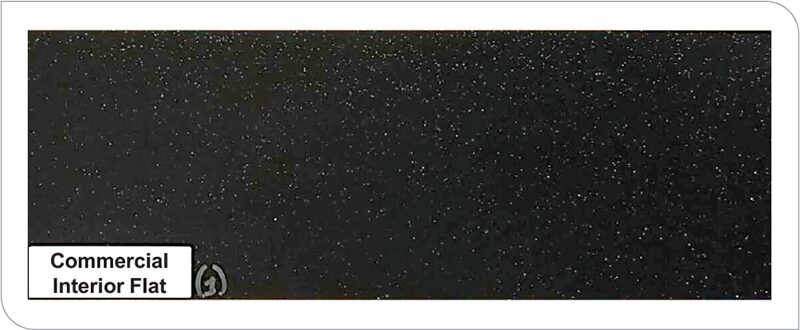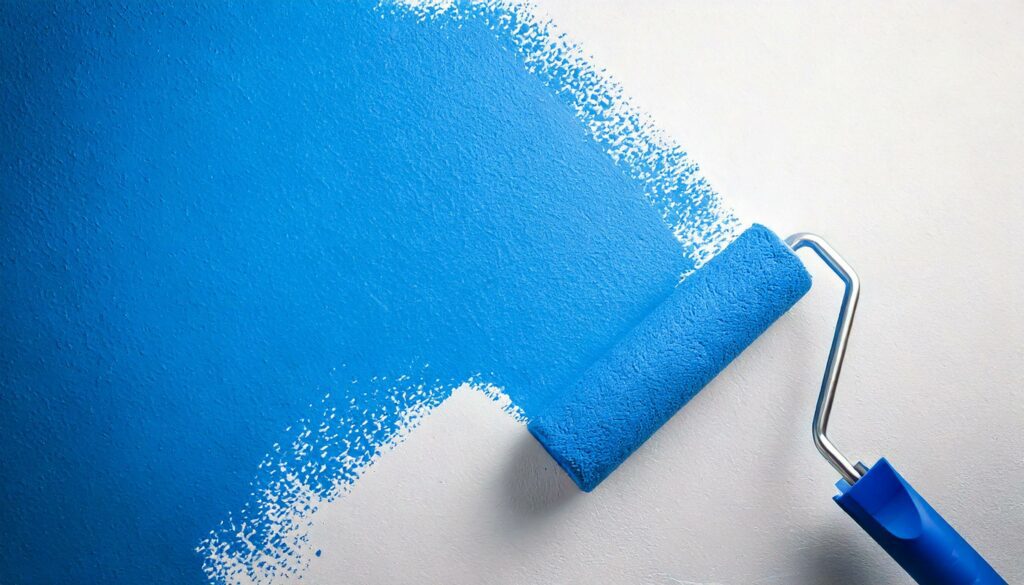By Wenqin (Sunny) Wang, Amy Qin, Gerry Valdez, Sophie Kim, Sam Lim, Yicheng Hu, and Jennifer Mills, The Dow Chemical Company, USA
Introduction
Coatings’ application performance, such as ease of application, superior coverage, and faster return-toservice, continue to be a key consideration for both consumers and contractors when choosing architectural coating products. Based on the claim analysis of commercial architectural coatings, paint application related properties are among the top claimed product performance in architectural coatings, as shown in Figure 11 The rheological properties of coatings play critical roles in determining various aspects of coatings application, including sag and leveling balance, spatter resistance, application feel, roller pattern, and applied hide. In addition to rheology of coatings, paint application process and results are highly dependent on environmental conditions, roller cover, paint applicator, and substrates. Traditionally, evaluating the appearance of coating and spatter resistance has heavily relied on visual assessment, which could be influenced by inconsistencies in human visual perception. To address this, we have conducted a series of roller application studies in different formulation spaces and employed advanced image analysis technologies to enable more reliable and quantitative evaluation of spatter resistance and roller patterns. In this article, we will share the insights gained from our study and discuss the impact of rheology modifiers on the performance of roller applications.
FIGURE 1 Top paint claims from commercial architectural coating products in the market in 2023.

Introduction of Spatter Resistance
Spatter resistance is an important roller application property. Paint spatters are tiny droplets of liquid paint that can be ejected from the roller/substrate as coatings are applied on substrates. The liquid droplets can land on adjacent surfaces or areas not meant to be painted. Coatings with good spatter resistance will reduce the work associated with preparing the surface and cleaning up after painting as well as help painters get the work done more efficiently.
Spatter resistance is highly influenced by the rheology of the coatings. A series of rheology modifiers were evaluated in four different formulations, including standard acrylic interior flat formulations with or without hydroxyethyl cellulose (HEC), premium acrylic flat formulation, premium composite-forming acrylic flat formulation, and economy acrylic/PVA blend flat formulations with or without HEC. In addition, nine commercial paints from leading paint manufacturers were also included in the study as benchmarks.
Rheology modifiers that were evaluated included both hydrophobically modified ethoxylated urethanes (HEURs) and hydrophobically modified alkali-swellable emulsions (HASEs), with rheology profiles spanning from shear-thinning to more Newtonian. Roller application was conducted on primed drywall (4′ × 4′) using woven roller cover, 7″ long, 3/8″ nap. A professional painting contractor conducted all roller applications. For each roller application trial, two vinyl charts are taped at the bottom of the drywall panel to capture spatter of the coating. Figure 2 shows an example of paint spatters on a black vinyl chart from a commercial interior flat paint, which has poor spatter resistance. The white dots on the charts are the spattered paint droplets. The top portion of the chart is closer to the drywall, which showed more paint spatters. The number of paint spatters decreased as the distance from the drywall increased.
FIGURE 2 Example of paint spatters captured on a black vinyl chart.

Image Analysis Algorithm Overview
Spatter resistance is rated by evaluating the paint spatter on vinyl charts. Several factors are included for evaluation, including the number of paint droplets, the size of droplets, and the intensity or contrast of droplets vs. background. Traditionally, this evaluation is done by visual assessment, where an operator would assign a score based on a set of standards or industry guidelines. However, this approach is prone to inconsistencies due to human visual perception.
A robust method has been developed for quantifying spatter resistance using image analysis for the detection and rating. To ensure consistent lighting and imaging condition among different spatter charts, images are captured using an imaging station under controlled light environment and imaging parameters. The captured images undergo image-processing techniques, such as image thresholding, to remove background noise. A blob-detection algorithm is then applied to identify individual spatter droplets. The algorithm identifies the blobs or a group of white pixels to capture the spatter. The algorithm was further refined based on fundamental physics of spatter-droplet generation to exclude the experimental artifacts from the group of detected spatters. Most of the spatters that result from the paint application will be circular shaped because the droplets experience free fall before landing on the test panel. The angle of incidence on these droplets can be assumed to be +/- 20 degrees, which will keep most of the droplets in a circular shape with constant diameter. On the other hand, experimental artifacts or unintentional paint marks on the test panel mostly occur in the form of streaks with large aspect ratio. Figure 3 shows the original image of the black vinyl chart that has undergone spatter-resistance testing on the left and the processed image with the detected spatters on the right. The figure shows one of the experimental artifacts in a non-circular shape located in the upper right corner. The blob detection highlights paint spatters in red circles, and the algorithm successfully identifies the experimental artifact, which was not included in the detection.
Continue reading in the January-February digital issue of CoatingsTech
